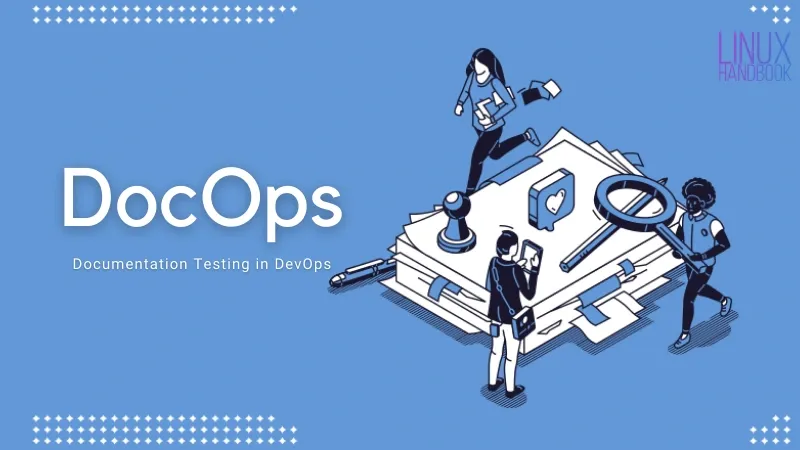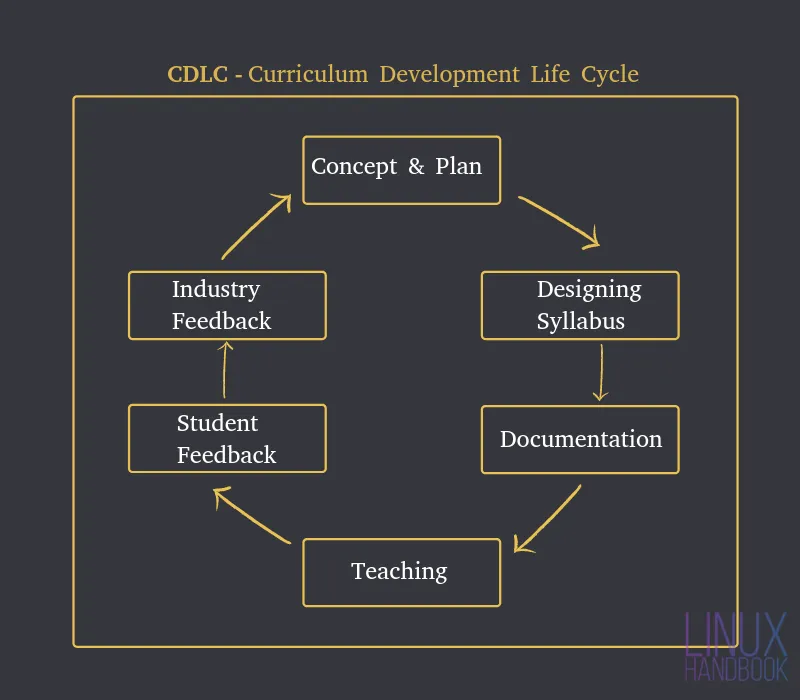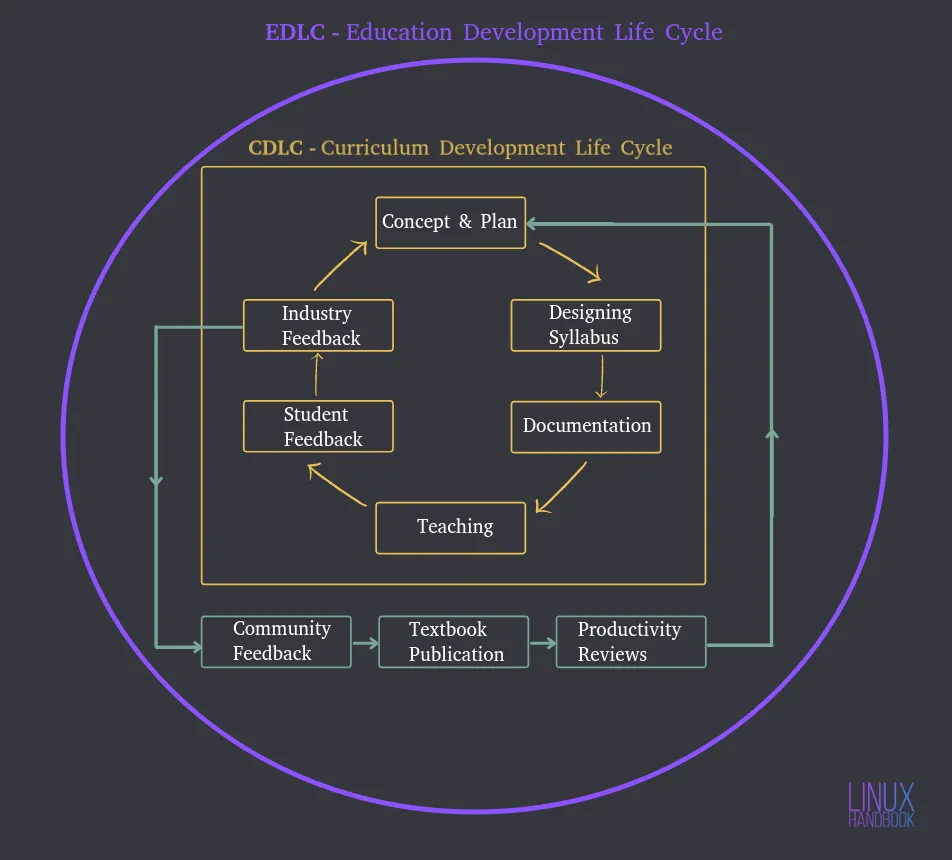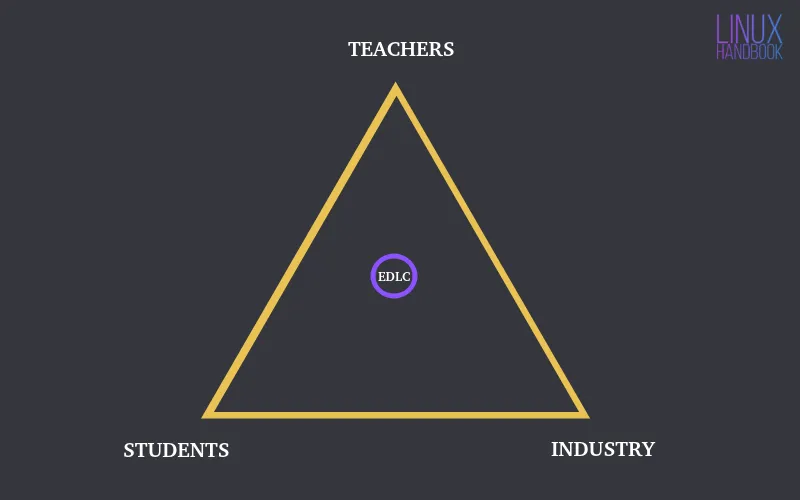EduOps: Applying DevOps To Bring the Academia and Industry Together
Learn what is EduOps and how it can bring the academia and industry closer together!
EduOps is an unexplored area. It has great potential to revolutionize the way the current academic system works, by adopting a DevOps approach towards teaching methodology. EdTech and EduOps are completely different, but the latter can certainly have a positive influence on the former.
EduOps is the application of DevOps inspired principles, coupled with effective DocOps and HumanOps strategies, to bridge the gap between academia and industry.

Now, why is there a gap between academia and industry? The easiest way to look at this is the current academic syllabus. Most of the focus is on theoretical knowledge that is useful only for scoring in exams. There is much less focus on the practical aspect that requires more attention, if the end goal is being skilled at understanding industrial level use cases.
So far, we have learned about DocOps and HumanOps in the earlier chapters of this Rethinking DevOps series. Can they be applied in academic practices?
- Just how DevOps speeds up the development and deployment of applications, EduOps speeds up the learning process through simplified and streamlined teaching approaches.
- EduOps as I propose, focuses on simplifying the process of transforming industry focused documentation into academically useful resources and study material.
- It is essential to keep the editing process of industry focused study material at a minimum, because the same students from academia, would become professionals in the industry some day.
Taking inspiration from System Development Life Cycle (SDLC)
From an universal perspective, any functional infrastructure can be regarded as a system that undergoes continuous development. Therefore, the System Development Life Cycle can definitely be adopted for streamlined academic progress.
Curriculum Development Life Cycle (CDLC)
Curriculum Development Life Cycle is the fundamental motivation behind the development of any field of study. Unless the teaching process is not carefully and consistently monitored, students would not be ready for industrial use cases.

A new field of study will always be under CDLC until it is ready to be embraced by the community. By community, I mean a synchronized collaboration among students, teachers and industry.
CDLC is an essential teaching and research methodology which consists of six essential stages. The development of an application involves the following steps:
- Concept Plan: Collectively shaping a set of topics to undertake a field of study.
- Designing Syllabus: This is when the field of study or subject is structured content-wise and designed/redesigned.
- Documentation: An interesting subject is ineffective without concise and simplified documentation of topics.
- Teaching: Making sure the designed syllabus and content is actually interesting and effective to understand through more focus on the practical aspects of learning.
- Student Feedback: Listening to student feedback can be a very important measure to ensure content quality consistently.
- Industry Feedback: Applying suggestions from industry professionals to improve teaching methodologies can play a significant role in making sure what students learn is industry ready.
Until and unless it is established that the field of study is carefully understood, structured and documented, this cycle will continue to exist. Once the subject is ready - both academically and industry-wise, it no longer falls under CDLC. It eventually falls under an Education Development Life Cycle (EDLC).
Education Development Life Cycle (EDLC)
Education Development Life Cycle is the fundamental motivation behind both the development and operation of an educational framework. It involves the continuous development of any field of study after its first inception and ensures its continuous improvement based on the feedback of students, professionals and the community.

- Concept Plan: Revisiting the set of topics that span around the field of study.
- Designing Syllabus: This is when the syllabus is further improved.
- Documentation: Continuous update of documentation and notes in line with academia and industry.
- Teaching: Making sure the new subject continues to be easily understandable. Teaching methodologies may be revised at this stage with focus on the subject's goals and industrial effectiveness.
- Student Feedback: Listening to student feedback would continue to be a very important measure to consistently ensure quality.
- Industry Feedback: Applying suggestions from industry professionals to improve teaching methodologies will continue to play a significant role in making students industry ready.
- Community Feedback: When the content is ready for release to the public, a mixed community of students, teachers and industry professionals can come together and make a final update to the academic draft for the relevant subject.
- Textbook Publication: The relevant textbooks can now be finally published.
- Productivity Reviews: Treating a textbook as a product can be an effective approach towards enhancing its value in industrial applications. Public product reviews make sure, the content is up-to-date and always future ready.
A community powered open model will always have the smoothest operations. The last step in the cycle is truly achievable only with an Open Source model. It is the greatest deciding factor in terms of the evolution of how we understand any subject or field of study.
In the current academic system, feedback from students, industries and the community is barely there...recognizing textbooks as a "product" is essential to monitor their effectiveness in real world scenarios in the industry.
The EduOps Triangle
Similar to the DevOps approach, we must understand that EduOps is short for "Educational Operations" and efficiently speeds up the delivery of knowledge, steadily and effectively.

The EduOps Triangle requires a consistent balance among teachers, students and industry professionals. Unlike SDLC, that needs to pivoted to develop an application, EDLC always needs to stay in the centre. This makes sure what the student learns is most effective when their skillsets would actually be applied in real world scenarios.
How can we maintain this delicate balance? It's very simple:

We can practice HumanOps at academic workplaces, faculty recruitments, as well as campus interviews. This ensures that students, teachers and the industry are all equally benefited, leading to the formation of better and humble societies.
By following a kinder approach at academic or industrial interviews, recruiters would always be able to bring out the best out of their potential employees. There is an urgent need for recruiters and interviewers to present themselves as approachable and kind. This brings out the confidence in potential employees, which is when they would be comfortable at an interview and bring out the right skill-sets they excel at!
Classification of subjects based on their nature of discipline
There is also a critical need to classify a diverse range of subjects based on their disciplinary nature. Every subject is different, and requires attention from faculty belonging to different disciplines. The following diagram and points (quoted from the reference linked below) can be extremely helpful in understanding how to design and continuously improve academic content using CDLC, EDLC and the EduOps triangle:

- Intradisciplinary: working within a single discipline.
- Crossdisciplinary: viewing one discipline from the perspective of another.
- Multidisciplinary: people from different disciplines working together, each drawing on their disciplinary knowledge.
- Interdisciplinary: integrating knowledge and methods from different disciplines, using a real synthesis of approaches.
- Transdisciplinary: creating a unity of intellectual frameworks beyond the disciplinary perspectives.

By continuously researching on the subjects that are being taught, we can always arrive a conclusion on classifying them according the necessary disciplinary requirements and interdepartmental collaborations. Collaborative research plays a key role in effective EduOps.
Linux can be a cross disciplinary subject, because solving a problem or carrying out a task can be from different disciplinary perspectives, such as system administration, software development or even hardware engineering.
An example of an intradisciplinary subject is mathematics, whereas, mathematical biology is interdisciplinary in nature. If the study expands, and also requires knowledge in physics, then it can also become multidisciplinary.
When a subject becomes too vast, they become transdisciplinary. For example, Bioinformatics and Artificial Intelligence are transdisciplinary disciplines because these fields require expertise and knowledge that are not limited to a particular set of disciplines. Even DevOps is!
At Linux Handbook, our continuous motivation is to help reduce the gap between academia and industry by adopting an effective EduOps approach. On this note, an example of an EduOps approach would be the process that we use to convert sysadmin manuals, tutorials and guides (industry focused) into academic hands-on workbooks (academia focused) without losing track of its usefulness in industrial productivity.
I hope this chapter helps bring the academia and industry closer and together. Till then, I'll continue to explore the various ways DevOps can revolutionize various domains in the next chapters in this series. Thank you for reading. Please share any feedback or suggestions if you have in the comment section below.
DevOps Geek at Linux Handbook | Doctoral Researcher on GPU-based Bioinformatics & author of 'Hands-On GPU Computing with Python' | Strong Believer in the role of Linux & Decentralization in Science

